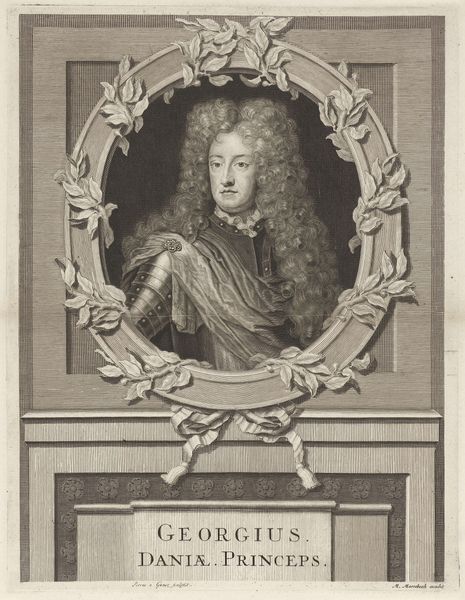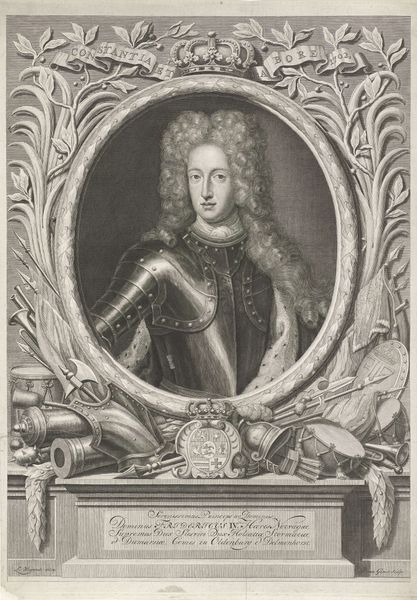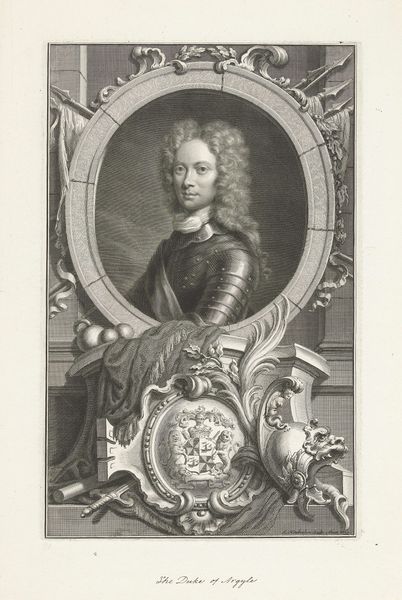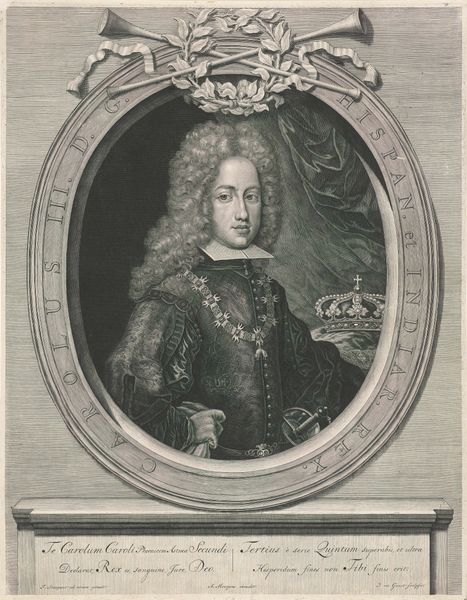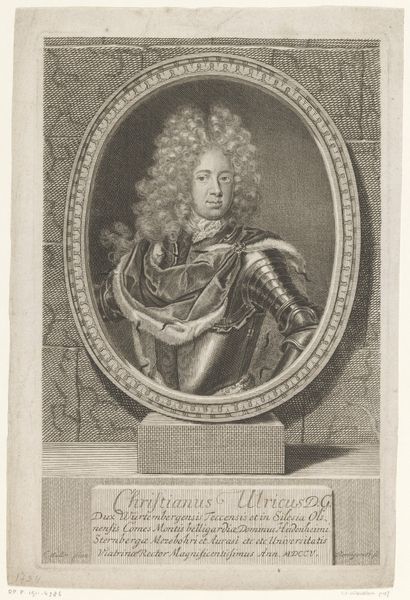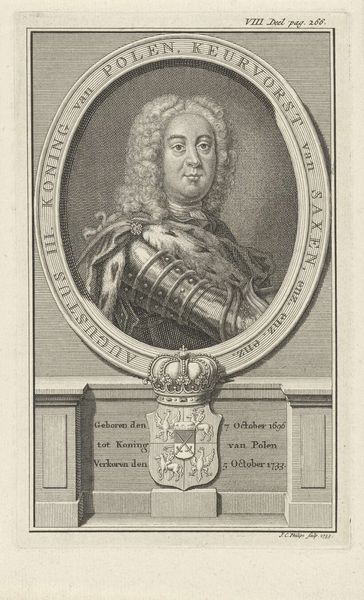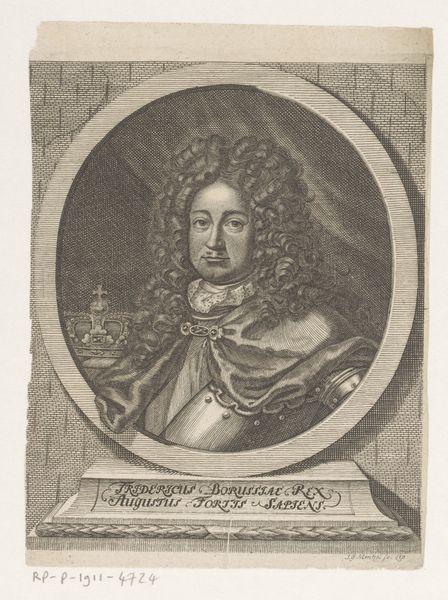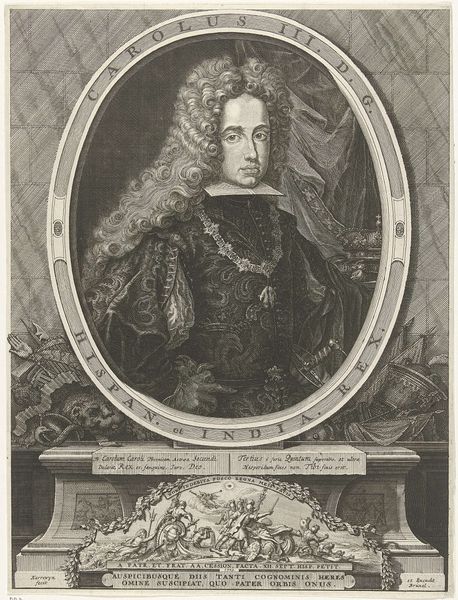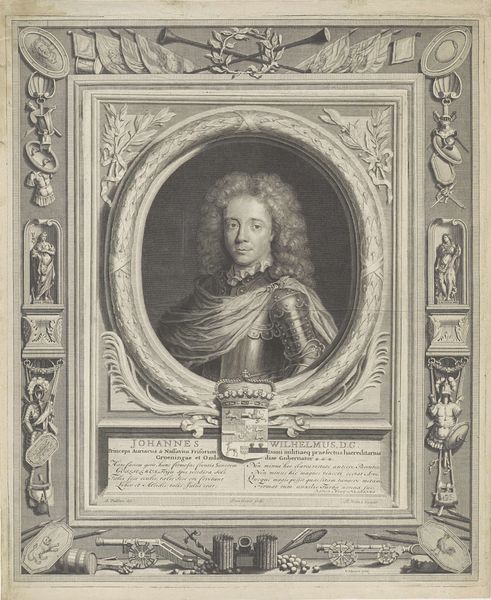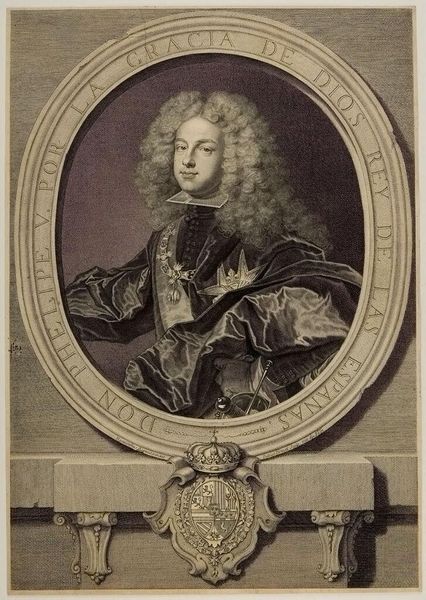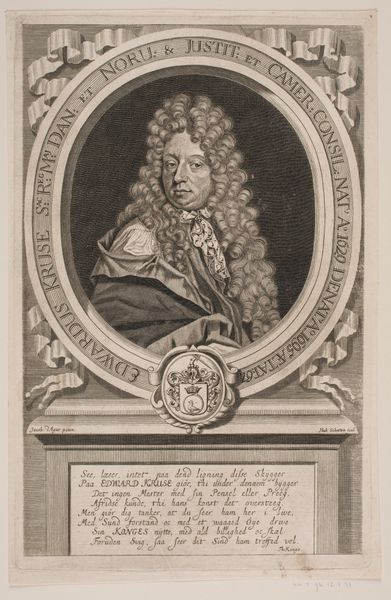
metal, engraving
#
portrait
#
baroque
#
metal
#
old engraving style
#
pencil drawing
#
history-painting
#
engraving
Dimensions: height 365 mm, width 280 mm
Copyright: Rijks Museum: Open Domain
Curator: The formality is almost overwhelming! All straight lines and right angles, except for the central portrait wreathed in laurel. Editor: Yes, and that central portrait, so meticulously rendered. This is Pieter van Gunst’s engraving, "Portret van keizer Jozef I," created between 1690 and 1731. It's currently held here at the Rijksmuseum. The medium is metal engraving, giving us these precise lines. Curator: It's a powerful representation of Baroque ideals. Look at the sharp contrast between light and shadow that almost sculpts the Emperor's features and armor. It gives him a sense of weightiness. Editor: Indeed, and it reflects more than mere artistic technique. During Joseph I’s reign, the Habsburgs were consolidating power after wars and internal conflict. Such imagery projected imperial might and legitimacy through carefully controlled likenesses. Curator: I’m drawn to the frame. It’s not just a frame but almost a proscenium, presenting the Emperor to his public. And notice the inscription below! Editor: Ah, yes, identifying Joseph I as ruler of the Romans, and of Hungary. Van Gunst, by framing the portrait with text, underlines not just the image but the Emperor’s titles. Consider the Baroque era emphasis on titles! A key part of one’s identity! Curator: It’s all about presentation, isn’t it? The armor, the elaborate wig… every detail screams power and divine right. He is visually positioned at the peak of human authority, divinely chosen, unquestionably supreme. Editor: Yes. It’s quite clear that van Gunst’s skill is directed toward something very specific here: enshrining imperial authority through a very carefully considered image, even down to the smallest mark. It gives the viewer some context. Curator: Ultimately, this engraving stands as a historical record, certainly, but it’s even more telling as an object created for a specific purpose. It conveys not just appearance but the core messages the imperial dynasty wished to communicate to its people and the wider world. Editor: For me, though, it showcases the remarkable capability of the engraving as a tool for communication. Its textures give it such impact, drawing our attention even today.
Comments
No comments
Be the first to comment and join the conversation on the ultimate creative platform.
